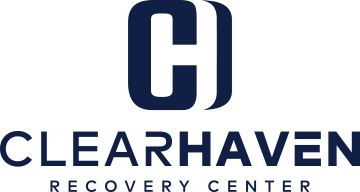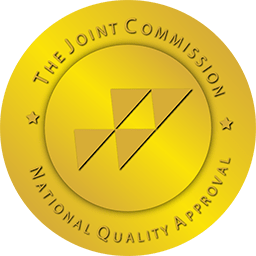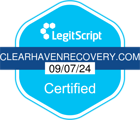The cycle of addiction is a vicious one. It begins with the use of drugs or alcohol as a coping mechanism for stress, trauma, or other issues. Over time, the substance use becomes a habit and eventually an addiction. The individual may suffer from physical and mental health problems, lose their job, and damage their relationships. They may engage in criminal behavior to support their habit, leading to incarceration and a cycle of reoffending.
Traditional approaches to addiction treatment focus on abstinence as the only solution, with little consideration for the complex issues underlying substance use. This approach often leads to a cycle of relapse and guilt, causing the individual to feel hopeless and unsupported in their journey to recovery. It is clear that a new approach is needed to break this cycle and provide effective support for individuals struggling with addiction.
Understanding harm reduction programs
Harm reduction programs are innovative initiatives that aim to minimize the negative consequences of substance use. They focus on providing support and resources to individuals who may not be ready or able to stop using drugs or alcohol. Harm reduction programs recognize that substance use is a complex issue with many underlying factors, and that abstinence may not be a realistic goal for everyone.
Harm reduction programs take many forms, including needle exchange programs, safe consumption sites, and medication-assisted treatment. These programs aim to provide clean needles, access to medical professionals, and education about safe drug use. They also provide support for individuals who may be struggling with other issues such as mental health problems or homelessness. By minimizing the negative consequences of substance use, harm reduction programs aim to improve overall community health and reduce the burden on emergency services.
The principles of harm reduction
The principles of harm reduction are based on the belief that substance use should be viewed as a public health issue rather than a moral failing. The goal of harm reduction is to reduce the harms associated with drug use rather than demand abstinence as the only solution. Harm reduction recognizes that substance use is a complex issue with many underlying factors, and that individuals who use drugs or alcohol should be treated with respect and compassion.
The principles of harm reduction include:
Meeting people where they are: Harm reduction programs recognize that individuals who use drugs or alcohol may not be ready or able to stop using. Harm reduction meets people where they are and provides support and resources to help them minimize the negative consequences of substance use.
Prioritizing the safety and well-being of individuals: Harm reduction programs prioritize the safety and well-being of individuals who use drugs or alcohol. This includes providing clean needles, access to medical professionals, and education about safe drug use.
Providing non-judgmental support: Harm reduction programs provide non-judgmental support for individuals who use drugs or alcohol. They recognize that substance use is a complex issue and that individuals who use drugs or alcohol should be treated with respect and compassion.
The impact of harm reduction programs on addiction treatment
Harm reduction programs have been shown to have a significant impact on addiction treatment. Studies have shown that harm reduction programs not only save lives but also improve overall community health by decreasing crime rates and reducing the burden on emergency services. Harm reduction programs also provide a sense of hope and empowerment to individuals struggling with addiction, ultimately leading to more positive outcomes and breaking the cycle of substance abuse.
One example of the impact of harm reduction programs is the Insite safe consumption site in Vancouver, Canada. Insite was the first legal safe consumption site in North America, opening in 2003. Since then, Insite has saved countless lives by providing a safe and supportive environment for individuals to use drugs. Insite also provides access to medical professionals, counseling services, and referrals to other support services. Studies have shown that Insite has reduced overdose deaths, decreased crime rates, and improved overall community health.
Criticisms and misconceptions about harm reduction
Despite the success of harm reduction programs, there are still many criticisms and misconceptions about this approach to addiction treatment. Some argue that harm reduction programs enable drug use and do not provide a solution to the underlying issues causing substance use. Others argue that harm reduction programs are a waste of resources and do not provide a long-term solution to addiction.
These criticisms and misconceptions are often based on a misunderstanding of the principles of harm reduction. Harm reduction programs do not enable drug use, but rather aim to minimize the negative consequences of substance use. Harm reduction programs also recognize that substance use is a complex issue with many underlying factors, and that abstinence may not be a realistic goal for everyone.
The role of harm reduction in the opioid crisis
The opioid crisis is a pressing issue that has impacted communities across the United States. Harm reduction programs have played an important role in addressing this crisis by providing support and resources to individuals struggling with opioid addiction.
One example is the use of naloxone, a medication that can reverse the effects of an opioid overdose. Harm reduction programs have distributed naloxone to individuals who use drugs and their loved ones, helping to save countless lives. Harm reduction programs have also provided education about safe drug use and access to medication-assisted treatment for opioid addiction.
Implementing harm reduction programs in your community
Implementing harm reduction programs in your community can be a challenging but rewarding process. It requires collaboration between health professionals, policymakers, and community members.
One important step is to educate yourself and others about harm reduction principles and the success of harm reduction programs in other communities. It is also important to build relationships with key stakeholders, including health professionals, policymakers, and community members.
Finally, it is important to advocate for harm reduction programs in your community. This can include writing letters to policymakers, attending community meetings, and sharing stories of the success of harm reduction programs in other communities.
Resources and support for harm reduction programs
There are many resources and support available for individuals and communities interested in implementing harm reduction programs. The Harm Reduction Coalition is a national organization that provides education and advocacy for harm reduction programs. The National Harm Reduction Training Institute provides training and technical assistance for individuals and organizations interested in harm reduction.
Conclusion: Embracing a new approach to addiction treatment
Harm reduction programs are transforming addiction treatment by providing an alternative approach that prioritizes minimizing the negative consequences of substance use. This approach recognizes that substance use is a complex issue with many underlying factors, and that abstinence may not be a realistic goal for everyone.
Despite criticisms and misconceptions, harm reduction programs have been shown to have a significant impact on addiction treatment, reducing overdose deaths, decreasing crime rates, and improving overall community health. It is important to continue to advocate for harm reduction programs and embrace this new approach to addiction treatment. By doing so, we can break the cycle of addiction and provide effective support for individuals struggling with substance use. Call us at 833.970.2054.











